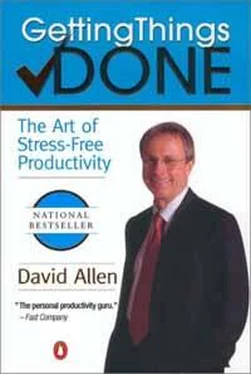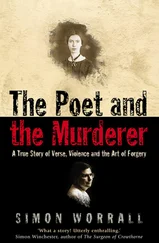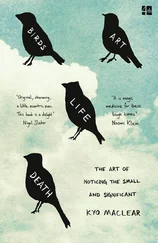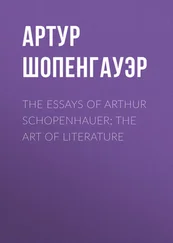E-mail and Databases E-mails that might contain good information related to your projects can be held in a dedicated e-mail folder (just follow the instructions on pages 152-53 for "@ACTION" and call it something like "@PROJECTS"). You may also find it worthwhile, if you don't have one already, to set up a more rigorous kind of digital database for organizing your thinking on a project or topic. If your company uses Lotus Notes, for example, you can create a project database either for your own private use on your PC or to be shared with others in your network. [10] Many Lotus Notes users don't even realize they can do this, but in fact it's one of the program's most powerful features. If you have Notes, check with your resident IT resource person and have him or her request system permission and show you how.
It's worth looking into some of the other types of free-form databases that are on the market, too—even just for your own use. It's great to be able to cut and paste from the Web or from e-mails and drop data under a topic somewhere or type in your own thoughts. Be sure, also, to explore the technology and tools that you already have—just learning how to use all the lists and attachments in something like the Palm organizer may provide you with sufficient "back-of-the-envelope" capability.
Paper-Based Files Having a separate file folder devoted to each project makes a lot of sense when you're accumulating paper-based materials; it may be low-tech, but it's an elegant solution nonetheless. Simplicity and ease of handling make for a good general-reference filing system—one that lets you feel comfort-able about creating a folder for scraps of paper from a meeting.
Pages in Notebooks A great advantage of paper-based loose-leaf notebooks is that you can dedicate a whole page or group of pages to an individual project. For years I maintained a midsize notebook with a "Projects" list in front and a "Project Support" section toward the back, where I always had some blank pages to capture any random thinking or plans and details about projects on my list.
Each of the methods described above can be effective in organizing project thinking. The key is that you must consistently look for any action steps inherent in your project notes, and review the notes themselves as often as you think is necessary, given the nature of the project.
You'll also want to clear out many of your notes once they become inactive or unreal, to keep the whole system from catching the "stale" virus. I've found a lot of value in capturing these types of thoughts, more for the way it consistently helps my thinking process than because I end up using every idea (most I don't!). But I try to make sure not to let my old thoughts stay around too long, pretending they're useful when they're not.
Organizing Nonactionable Data
Interestingly, one of the biggest problems with most people's personal management systems is that they blend a few actionable things with a large amount of data and material that has value but no action attached. Having good, consistent structures with which to manage the nonactionable items in our work and lives is as important as managing our action and project reminders. When the nonactionable items aren't properly managed, they clog up the whole process.
Unactionable items fall into two large categories: reference materials and reminders of things that need no action now but might at a later date.
Reference Materials
Much of what comes across your desk and into your life in general is reference material. There's no action required, but it's information that you want to keep, for a variety of reasons. Your major decisions will be how much to keep, how much room to dedicate to it, what form it should be stored in, and where. Much of that will be a personal or organizational judgment call based upon legal or logistical concerns or personal preferences. The only time you should have attention on your reference material is when you need to change your system in some way because you have too much or too little information, given your needs or preferences.
The problem most people have psychologically with all their stuff is that it's still "stuff"—that is, they haven't decided what's actionable and what's not. Once you've made a clean distinction about which is which, what's left as reference should have no pull or incompletion associated with it—it's just your library.Your only decision then is how big a library you want. When you've fully implemented this action-management methodology, you can be as big a packrat as your space (physical and digital) will allow. As I've increased the size of the hard disk in my computer, I've kept that much more e-mail in my archives. The more the merrier, as far as I'm concerned, since increasing the volume of pure reference material adds no psychic weight.
The Variety of Reference Systems
There are a number of ways to organize reference material, and many types of tools to use. What follows is a brief discussion of some of the most common.
• General-reference filing—paper and e-mail
• Large-category filing
• Rolodexes and contact managers
• Libraries and archives
General-Reference Filing As I'Ve said, a good filing system is critical for processing and organizing your stuff. It's also a must for dealing with the sometimes huge volume of paper-based materials that are valuable for you for one reason or another. Ideally you will already have set up a general-reference filing system as you were processing "in." You need to feel comfortable storing even a single piece of paper that you might want to refer to later, and your system must be informal and accessible enough that it's a snap to file it away in your alphabetized general-reference system, right at hand where you work. If you're not set up that way yet, look back at chapter 4 for help on this topic.
Your filing system should be a simple library of data, easily retrievable — not your reminder for actions, projects, priorities
Most people seem to wind up with 200 to 400 paper-based general-reference files and 30 to 100 e-mail reference folders.
Large-Category Filing Any topic that requires more than fifty file folders should probably be given its own section or drawer, with its own alpha-sorted system. For instance, if you're managing a corporate merger and need to keep hold of a lot of the paper-work, you may want to dedicate two or three whole file cabinets to all the documentation required in the due-diligence process. If gardening or sailing or cooking is your passion, you may need at least a whole file drawer for those designated hobbies.
Bear in mind that if your "area of focus" has support material that could blend into other "areas of focus," you may run into the dilemma of whether to store the information in general reference or in the specialized reference files. When you read a great article about wood fencing and want to keep it, does that go in your "Garden" cabinet or in the general system with other information about home-related projects? As a general rule, it's best to stick with one general-reference system except for a very limited number of discrete topics.
Rolodexes and Contact Managers Much of the information that you need to keep is directly related to people in your network. You need to track contact information of all sorts—home and office phone numbers and addresses, cell-phone numbers, fax numbers, e-mail addresses, and so on. In addition, if you find it useful, you may want to maintain information about birthdays, names of friends' and colleagues' family members, hobbies, favorite wines and foods, and the like. In a more rigorous professional vein, you may need or want to track hire dates, performance-review dates, goals and objectives, and other potentially relevant data for staff development purposes.
Читать дальше











